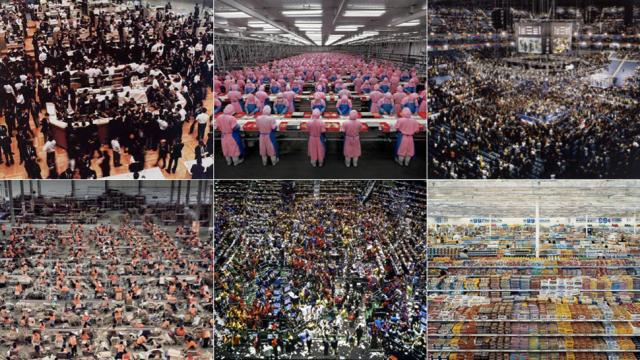Art is expensive. Actually, no: high art is expensive. It’s one of the most unregulated, manipulated markets in the world, with an extreme minority of artists in the upper stratosphere and a vast majority of unknowns on the ground floor. We recently looked at the 10 most expensive photographs ever sold, and three of them are by the same artist: Andreas Gursky, who opened a new exhibition in Japan this month. So now seems like a good time to ask: How did “Gurskymania” become a thing?
Both Priceonomics and Quartz have taken a look at the maths of the art market, and the reality is shocking when laid out by economists. The very basic gist of it? Because the only real value system at work in the art world is subjective, it’s up to the art galleries to manipulate the cost of their artists’ work. They do this in two complex ways: By setting prices that walk a careful line between too cheap (sending a message that the artist isn’t worth much) and too expensive (sending a message that the artist is overhyped), and by controlling who buys it (saying yes to prestigious collectors and no to everyone else). In essence, it’s a completely opaque and entirely fabricated piece of brand manipulation, carried out over the course of decades.
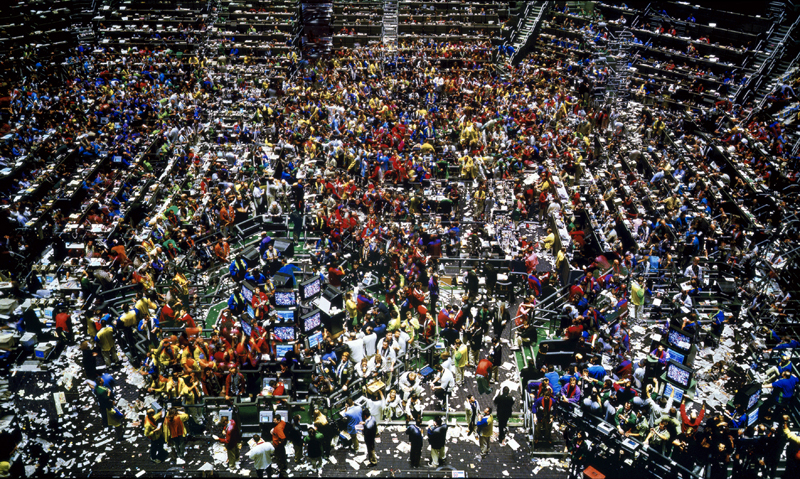
Andreas Gursky, Chicago Board of Trade II, 1999.
It’s a complicated dance, and it takes a master to perfect it. Gursky is one of the rare photographers that has. He started out as one in a pack of similar photographers, all part of the so-called Dusseldorf School, which championed realism, led by Bernd and Hilla Becher. How did he distinguish himself from a group of like-minded documentarians?
Gursky’s professional career began with group shows in 1985. A year later he’d been noticed, and a solo show at a small German museum followed. Soon, he was showing at a smattering of galleries scattered throughout Europe. So far, so standard.
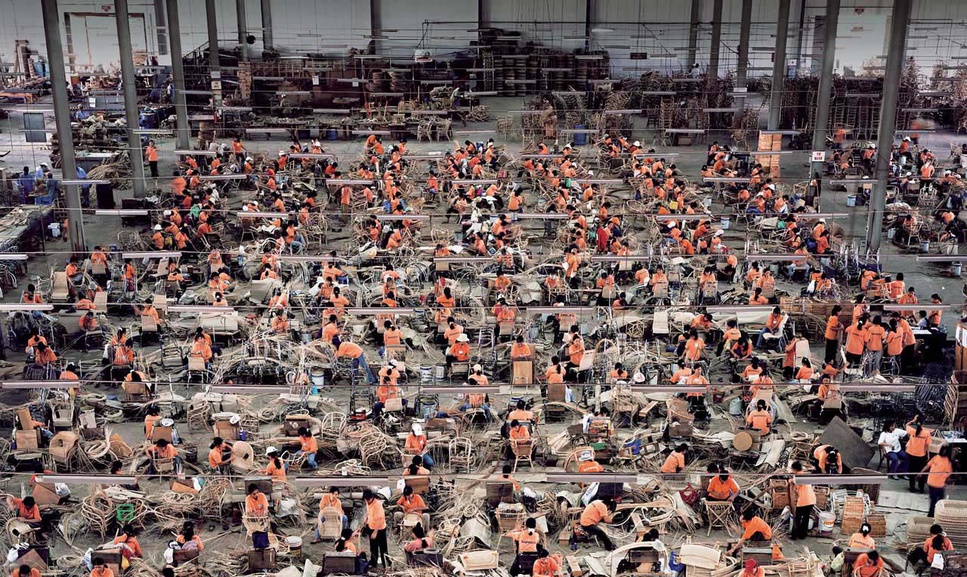
Workers at a cane furniture factory in Nha Trang, Vietnam, shot by Andreas Gursky.
Here’s where it gets more complicated. It was the early 1990s, and the art world was booming. High-end collectors, as Quartz’s Allison Schrager points out, “prefer provocative work… Artists who push boundaries and reflect social disorder serve an important role in history and our modern society.” Gursky’s work fit the bill. He photographs what you might call “market phenomena:” Office buildings, 99 cent stores, and stock market floors. They’re dense, static images where every detail is equal to the next. Shot in centres of capitalism like Tokyo, Hong Kong, and Los Angeles, and printed on a massive scale, they are perfect kind of photography for a time obsessed with consumerism and economic health.
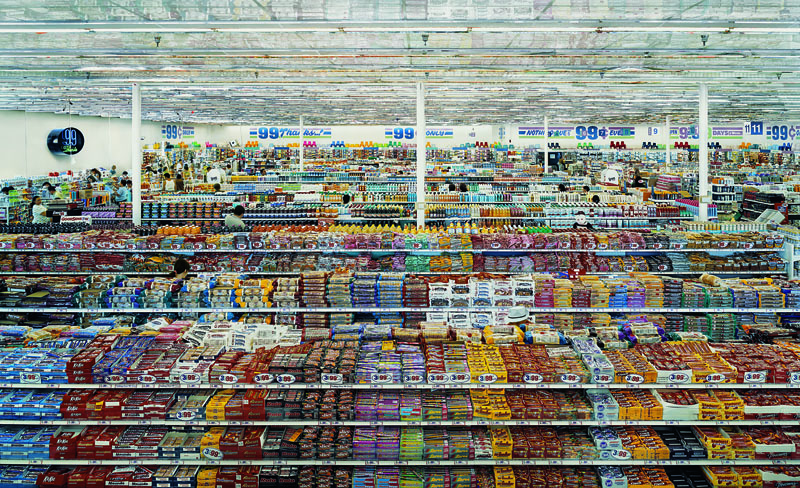
Andreas Gursky, 99 Cent, Andreas Gursky. Courtesy of National Art Center.
The subject matter itself demanded attention — and soon, major museums came calling. In 1998, Gursky was invited to do his first solo museum show in the US at the Milwaukee Museum of Art, then an up-and-coming institution with a reputation that was just beginning to solidify in the art world at large (thanks, in part, to its newly opened building by Santiago Calatrava). The show was a massive hit. That year, the growth rate for an average Gursky sale rose 3000 per cent.
Only three years later, MoMA was staging a sweeping retrospective of Gursky’s work (he was 46). Immense success has followed him since, trailing with private prizes and mid-career retrospectives all over the world. Two years ago, his Rhein II sold at auction for a record-shattering $US4.3 million. The 4m wide photo shows the river edges by two swatches of green, above a grey sky.

Andreas Gursky, Rhein II.
But outside forces have conspired to give Gursky even greater allure. He was one of the first photographers to experiment with chromogenic prints — aka “c-prints” — which use unstable colour compounds. By the late 2000s, collectors were noticing that these prints fade quickly over time. No one knows how long c-prints will last, even when they’re properly cared for. So not only are Gursky prints in demand — they’re also endangered.
At the same time, the world has changed since Gursky first started depicting it. And like any good boom, Gurskymania has come with its own backlash. “… Gursky is still trying to render purring pre-9/11 space, where commerce ticked along without an undercurrent of fear,” noted Jerry Saltz in New York Magazine. “Gursky’s new pictures are filled with visual amphetamine, but now they’re laced with psychic chloroform.”

Qatar (2012) at the National Art centre. Image via Gadabout.
Despite the cooling off critics, Gursky continues to bring in top dollar at auction — and his allure hasn’t dimmed in the eyes of curators. This month, in Tokyo, the National Art centre unveiled a huge exhibition, including new works which show us heavily loaded landscapes. There’s Qatar (2012), for example, which looks like the inside of a gold vault, or Bahrain (2007), depicting the empty Losail International Circuit, built to host Grand Prix races.
We don’t normally think of art-making as a market-driven activity, but it often is. What’s really interesting is that by holding up a mirror to intensely active economic markets, Gursky has been extremely successful at manipulating one of them. Check out the show, if you’re in Tokyo, until September 16.

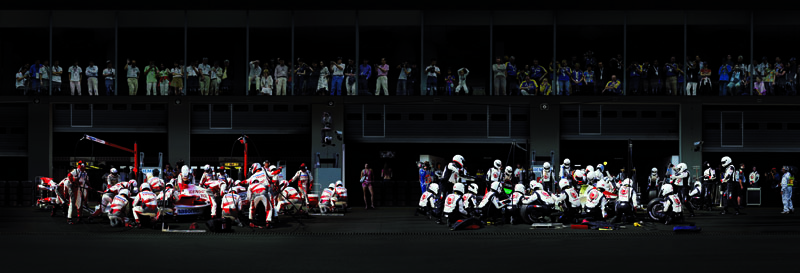
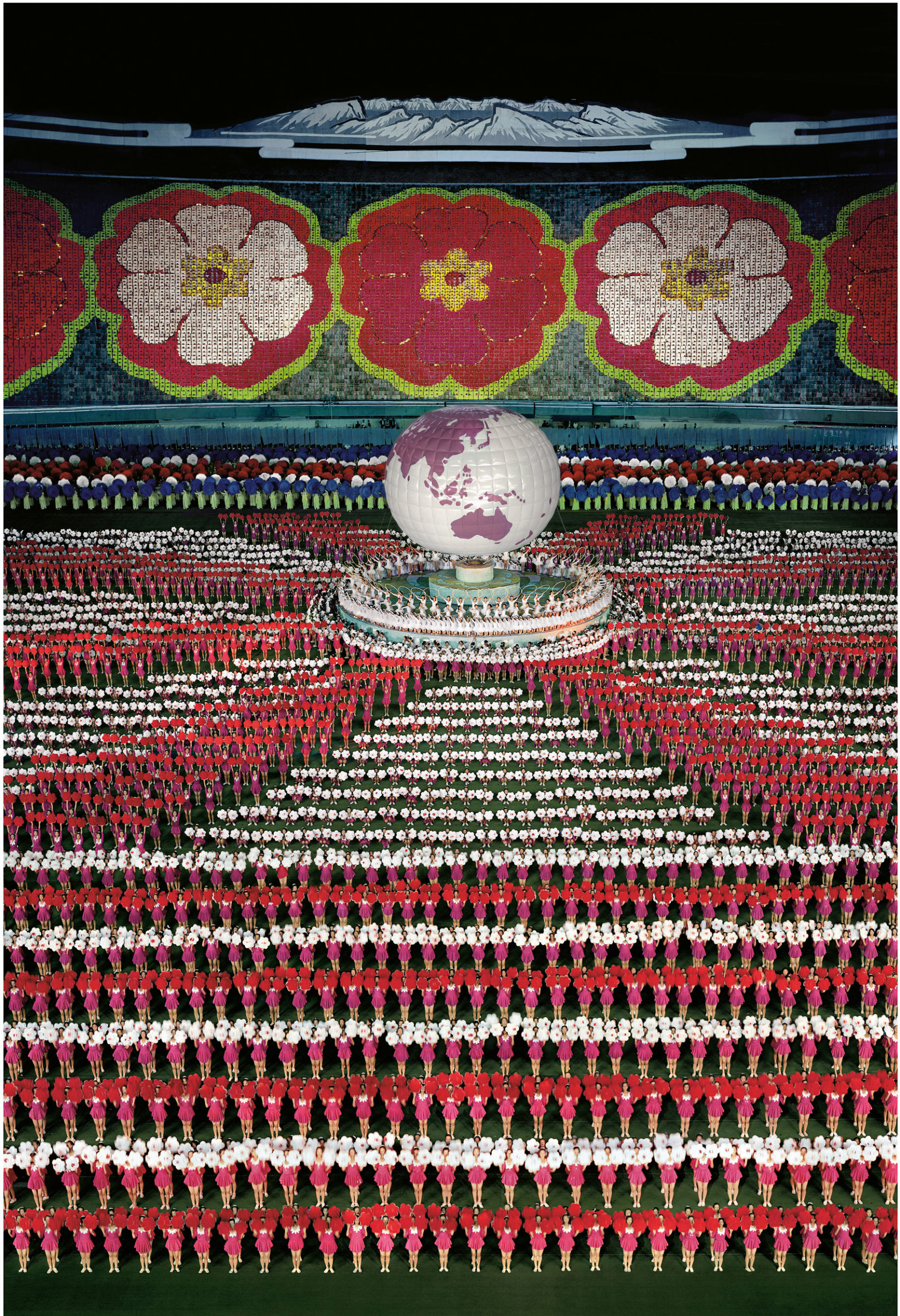
Pictures: National Art Center Tokyo
